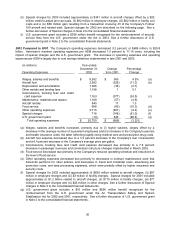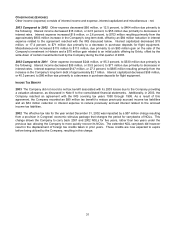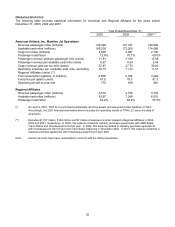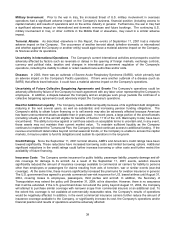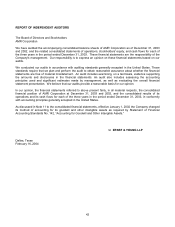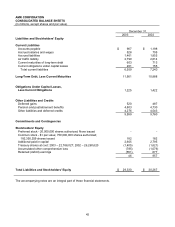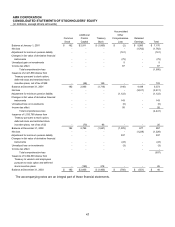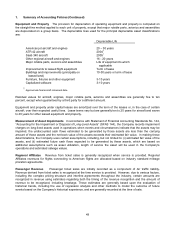American Airlines 2003 Annual Report Download - page 42
Download and view the complete annual report
Please find page 42 of the 2003 American Airlines annual report below. You can navigate through the pages in the report by either clicking on the pages listed below, or by using the keyword search tool below to find specific information within the annual report.40
Interest The Company’s earnings are also affected by changes in interest rates due to the impact those changes
have on its interest income from cash and short-term investments, and its interest expense from variable-rate debt
instruments. The Company’s largest exposure with respect to variable-rate debt comes from changes in the
London Interbank Offered Rate (LIBOR). The Company had variable-rate debt instruments representing
approximately 37 percent and 43 percent of its total long-term debt at December 31, 2003 and 2002, respectively,
and interest rate swaps on notional amounts of approximately $138 million at December 31, 2002. If the
Company’s interest rates average 10 percent more in 2004 than they did at December 31, 2003, the Company’s
interest expense would increase by approximately $13 million and interest income from cash and short-term
investments would increase by approximately $4 million. In comparison, at December 31, 2002, the Company
estimated that if interest rates averaged 10 percent more in 2003 than they did at December 31, 2002, the
Company’s interest expense would have increased by approximately $15 million and interest income from cash
and short-term investments would have increased by approximately $5 million. These amounts are determined by
considering the impact of the hypothetical interest rates on the Company’s variable-rate long-term debt, interest
rate swap agreements, and cash and short-term investment balances at December 31, 2003 and 2002.
Market risk for fixed-rate long-term debt is estimated as the potential increase in fair value resulting from a
hypothetical 10 percent decrease in interest rates, and amounts to approximately $372 million and $395 million as
of December 31, 2003 and 2002, respectively. The change in market risk is due primarily to the increase in the
Company’s fixed-rate long-term debt during 2003. The fair values of the Company’s long-term debt were
estimated using quoted market prices or discounted future cash flows based on the Company’s incremental
borrowing rates for similar types of borrowing arrangements.
Other The Company holds investments in certain other entities which are subject to market risk. However, the
impact of such market risk on earnings is not significant due to the immateriality of the carrying value and the
geographically diverse nature of these holdings.


